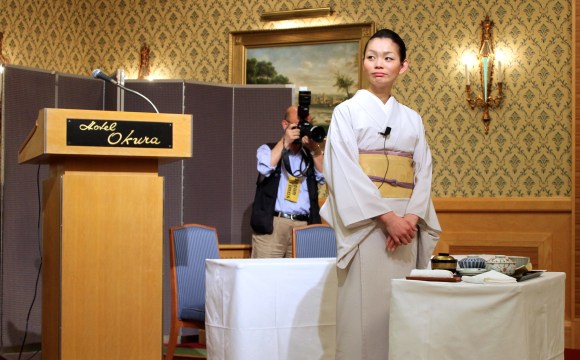
Uh oh, have you been behaving like an oafish gaijin?
We were recently invited to an event promoting the health benefits of Japanese-style breakfasts or wachoshoku, held at Tokyo’s iconic Hotel Okura. As part of the schedule, we were treated to a dining etiquette lesson from Reiko Kobayashi, a staff member at their Japanese restaurant Yamazato.
▼ The lobby of Hotel Okura. On a side note, this is actually an annex building. The historic main structure was sadly demolished last year in order to rebuild ahead of the 2020 Olympics, breaking the hearts of Tokyo design fans.
First, let’s take a look at what wachoshoku is. The standard Japanese breakfast is ichiju sansai or one soup, three sides. This doesn’t count the rice or pickles, of course, which are considered so indispensable as to not be worth mentioning. The three side dishes are typically a piece of grilled fish, meat or tofu, a simmered vegetable dish and an egg dish.
▼ What we ate. If you are keeping track at home, this is more like ichiju, gosai (one soup, five sides), but it is a fancy restaurant after all.
So let’s start with the etiquette. According to Kobayashi-san, anytime you have a drink or food in front of you, you should put your napkin in your lap, with about a third folded over. This part is used for wiping your mouth and keeping it turned in means the dirty part will always be covered.
Now you may use your oshibori or damp towel. This is only for cleaning your hands and should not be used to clean your arms or face.
Next, prepare your chopsticks. With your right hand (assuming you are right-handed), pick up the chopsticks from the top. Pull off the paper sleeve and place it to the left of your tray. Move your left hand underneath to hold the chopsticks, then move your right hand under the chopsticks to hold them. If they are the type that needs to be pulled apart, you can split them now.
To put down the chopsticks, reverse the movements, putting your left hand underneath to switch the grip of your right hand from under to on top. Place the chopsticks back on the chopstick rest with about 3 cm resting over the edge.
▼ Your default chopstick position when you are not actively eating.
Before you dig in, remember to sit up straight and say itadakimasu!
Now comes the fun part, actually eating! Kobayashi-san reminds us that the dishes are not meant to be eaten one at a time. Instead, enjoy the balance of the seasonal ingredients by flitting from dish to dish. Generally, you should eat a morsel of food with a bite of rice.
▼ Even the dishes get in on the seasonal theme. Here we have a pattern of plum blossoms to mark the February emergence of the fragrant blossoms.
The soup is usually eaten at the end of the meal, but you can remove the lids from the rice and simmered dish. To do so, hold the dish with your left hand and pick up the lid with your right. Place the lids upside-down on the table or tray on whichever side is closest. Placing it upside-down protects the table or the lacquer tray from water droplets and staining.
▼ A dish of fry-simmered sable fish, hijiki-shinoda roll, greens and a carrot carved to look like plum blossoms. Those little touches really wow.
Hunching over the table to eat is considered bad manners. Instead, most of the dainty dishes can be lifted into your hands and held in the left and brought close to your mouth while you handle the chopsticks with your right.
▼ These two side dishes are clearly small enough to be lifted off the table. The kobachi or small stewed dish even has a handy little… ah, handle.
The larger dishes are not meant to be lifted, however. As a rule of thumb, Kobayashi-san says that if a dish would fit comfortably in your palm, it can be picked up. If not, leave it on the table. If you are worried about dropping bits of food, you can use the lid from the simmered dish as a kind of plate. In that case, pick it up with your left hand, squeezing the small ring between your pointer and middle finger for leverage. Place each bite on the lid to ferry it to your mouth or hold the lid under the chopsticks to catch anything that falls.
▼ The heavier ceramic dish for the eggs would be too unwieldy to lift. Also, the grated daikon radish is meant to be used as a palate cleanser after the sweet egg omelette, not to be eaten with it. Whoops! Your author has been messing that one up.
With grilled fish or fish with the head attached, each bite should be separated from the left-hand side, one at a time, without distorting the overall shape of the fish. The raw ginger stem (hajikami) serves to eliminate fish breath, so save it until the end to cleanse your palate.
▼ That pink stick is the hajikami.
If at any point you would like more rice, leave a few grains in your bowl. This shows appreciation to the staff for noticing before you finished eating everything. Of course, it’s fine to ask for a refill too. If you finish all of the rice, this signals you are full and don’t need any more.
The soup is usually eaten last. As before, remove the lid and place it upside-down on the table or tray to your right.
▼The lacquer soup bowl also has a beautiful seasonal fern design.
When you are finished with your meal, place all of the lids back on their dishes as before. Do not put them upside down on top of the bowl, as moisture and food scraps can damage the surface.
And that’s it! Gochisosama, Kobayashi-san.
This article deals specifically with the etiquette of a Japanese breakfast, in which the dishes are served all at once, but many of the tips apply to Japanese-style dining at lunch and dinner as well. It may seem complicated, but each principle has a functional rationale and makes elegant sense when understood.
The best advice I can give you, though, is to just enjoy the artistic presentation and delicious seasonal flavors without worrying too much about your Ps and Qs. Your chef will be more pleased to hear you enjoyed the meal than to see you eat it with perfect correctness.
Of course, some people are stricter than others…
Images and content © RocketNews
Etiquette tips adapted from materials provided by the Hotel Okura Tokyo’s Washoku no Yamato


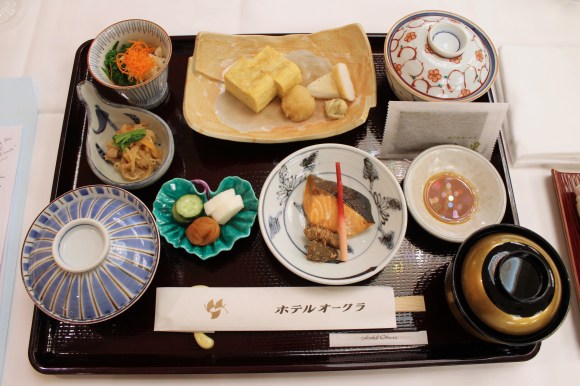

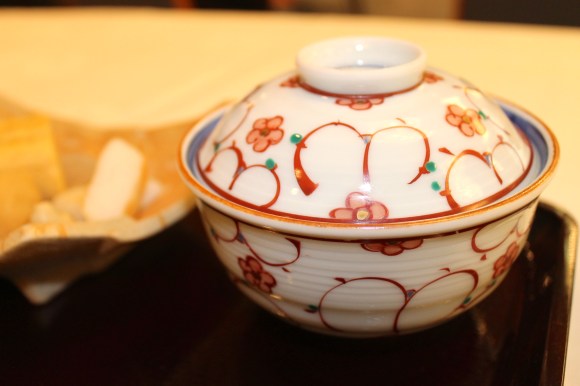

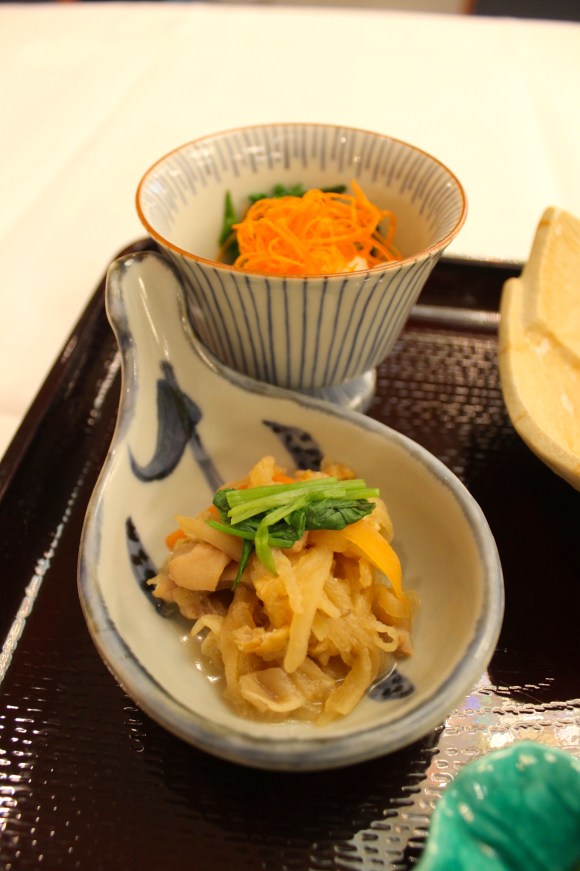
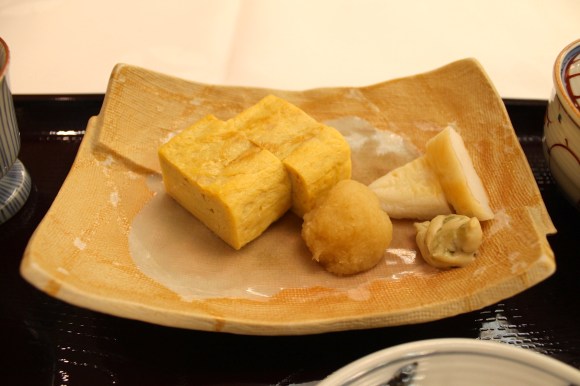
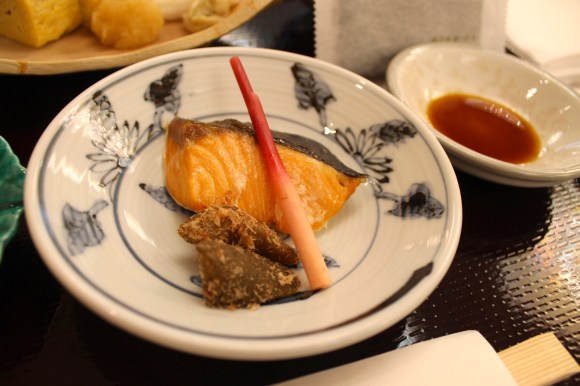
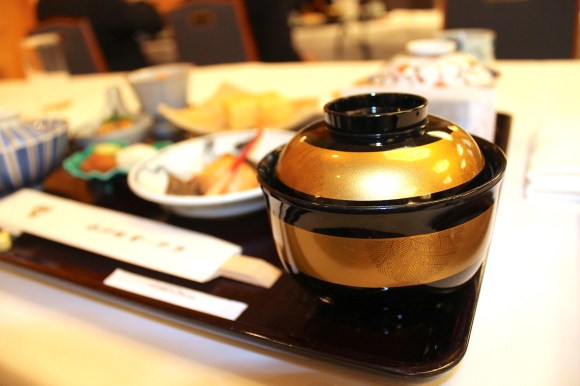
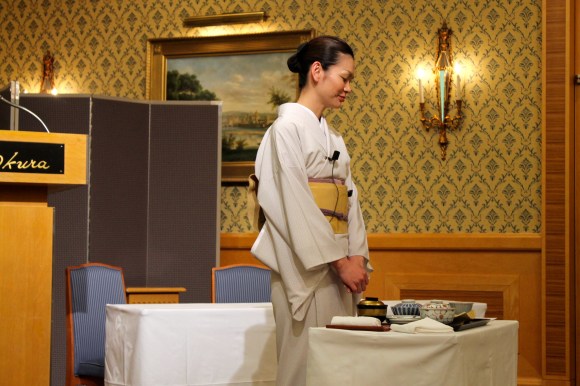
 Bowl or chopsticks: Which one should you pick up first?
Bowl or chopsticks: Which one should you pick up first? The polite way to eat onigiri rice balls sparks debate online
The polite way to eat onigiri rice balls sparks debate online The Mother of all Bentos–a Japanese meal that’s to die for
The Mother of all Bentos–a Japanese meal that’s to die for Everything you need to know about dining at a sushi restaurant—in handy infographics!【Pics】
Everything you need to know about dining at a sushi restaurant—in handy infographics!【Pics】 BonAppetour startup lets you cook and dine with Tokyo locals in their homes
BonAppetour startup lets you cook and dine with Tokyo locals in their homes Starbucks Japan ready to get Year of the Horse started with adorable drinkware and plushies【Pics】
Starbucks Japan ready to get Year of the Horse started with adorable drinkware and plushies【Pics】 This is possibly the coziest train in all Japan thanks to onboard hot spring footbaths【Pics】
This is possibly the coziest train in all Japan thanks to onboard hot spring footbaths【Pics】 7 great places to see Mt. Fuji from without having to climb it
7 great places to see Mt. Fuji from without having to climb it New Japanese menstrual product seeks to help women spot unidentified iron deficiencies
New Japanese menstrual product seeks to help women spot unidentified iron deficiencies Japan’s otoshidama tradition of giving kids money at New Year’s gets a social welfare upgrade
Japan’s otoshidama tradition of giving kids money at New Year’s gets a social welfare upgrade Japan’s super easy sweet potato spread lets you make sweet potato bread thanks to Don Quijote
Japan’s super easy sweet potato spread lets you make sweet potato bread thanks to Don Quijote Tokyo train stations get new Olympic melodies and signage for the Games
Tokyo train stations get new Olympic melodies and signage for the Games Rent an entire folk house in Japan, surrounded by nature just outside Tokyo
Rent an entire folk house in Japan, surrounded by nature just outside Tokyo Sylvanian Families x Technics—we discover DJ turntable replicas are perfect for mini animal raves
Sylvanian Families x Technics—we discover DJ turntable replicas are perfect for mini animal raves 7-Eleven Japan’s ramen-cooking robot whipped us up a bowl of noodles【Taste test】
7-Eleven Japan’s ramen-cooking robot whipped us up a bowl of noodles【Taste test】 Disillusionment at Tsukiji’s tourist-target prices led us to a great ramen restaurant in Tokyo
Disillusionment at Tsukiji’s tourist-target prices led us to a great ramen restaurant in Tokyo Japan may add Japanese language proficiency, lifestyle classes to permanent foreign resident requirements
Japan may add Japanese language proficiency, lifestyle classes to permanent foreign resident requirements Lacquerware supplier to emperor of Japan and Pokémon team up for new tableware
Lacquerware supplier to emperor of Japan and Pokémon team up for new tableware Starbucks Japan releases new zodiac chilled cup drink for 2026
Starbucks Japan releases new zodiac chilled cup drink for 2026 Cyberpunk anime meets traditional culture in Ghost in the Shell gold leaf Japanese changing screens
Cyberpunk anime meets traditional culture in Ghost in the Shell gold leaf Japanese changing screens Hello Kitty Choco Egg figures are an adorable trip through three periods of Japanese pop culture【Pics】
Hello Kitty Choco Egg figures are an adorable trip through three periods of Japanese pop culture【Pics】 Japan’s human washing machines will go on sale to general public, demos to be held in Tokyo
Japan’s human washing machines will go on sale to general public, demos to be held in Tokyo 7-Eleven Japan starts new temporary luggage storage service in over 300 branches
7-Eleven Japan starts new temporary luggage storage service in over 300 branches Starbucks teams up with 166-year-old Kyoto doll maker for Year of the Horse decorations【Photos】
Starbucks teams up with 166-year-old Kyoto doll maker for Year of the Horse decorations【Photos】 Tokyo considering law requiring more trash cans following litter increase in heavily touristed area
Tokyo considering law requiring more trash cans following litter increase in heavily touristed area Tokyo’s Tsukiji sushi neighborhood asks tour groups to stay away for the rest of the month
Tokyo’s Tsukiji sushi neighborhood asks tour groups to stay away for the rest of the month Nintendo’s Kirby now delivering orders at Kura Sushi restaurants, but not in Japan
Nintendo’s Kirby now delivering orders at Kura Sushi restaurants, but not in Japan Tokyo event lets you travel back in time, for free, to celebrate 100 years since Showa era start
Tokyo event lets you travel back in time, for free, to celebrate 100 years since Showa era start Sanrio theme park in Japan announces plans to expand into a Sanrio resort
Sanrio theme park in Japan announces plans to expand into a Sanrio resort Stamina-destroying “Paralysis Noodles” are Tokyo’s newest over-the-top ramen innovation
Stamina-destroying “Paralysis Noodles” are Tokyo’s newest over-the-top ramen innovation Survey asks foreign tourists what bothered them in Japan, more than half gave same answer
Survey asks foreign tourists what bothered them in Japan, more than half gave same answer Japan’s deadliest food claims more victims, but why do people keep eating it for New Year’s?
Japan’s deadliest food claims more victims, but why do people keep eating it for New Year’s? We deeply regret going into this tunnel on our walk in the mountains of Japan
We deeply regret going into this tunnel on our walk in the mountains of Japan Studio Ghibli releases Kodama forest spirits from Princess Mononoke to light up your home
Studio Ghibli releases Kodama forest spirits from Princess Mononoke to light up your home Major Japanese hotel chain says reservations via overseas booking sites may not be valid
Major Japanese hotel chain says reservations via overseas booking sites may not be valid Put sesame oil in your coffee? Japanese maker says it’s the best way to start your day【Taste test】
Put sesame oil in your coffee? Japanese maker says it’s the best way to start your day【Taste test】 No more using real katana for tourism activities, Japan’s National Police Agency says
No more using real katana for tourism activities, Japan’s National Police Agency says The top 10 annoying foreign tourist behaviors on trains, as chosen by Japanese people【Survey】
The top 10 annoying foreign tourist behaviors on trains, as chosen by Japanese people【Survey】 Starbucks Japan reveals new sakura drinkware collection, inspired by evening cherry blossoms
Starbucks Japan reveals new sakura drinkware collection, inspired by evening cherry blossoms Japanese Twitter rolls eyes at book teaching “manners 90 percent of Japanese people don’t know”
Japanese Twitter rolls eyes at book teaching “manners 90 percent of Japanese people don’t know” Should you turn your bowl upside down after eating at a Japanese restaurant?
Should you turn your bowl upside down after eating at a Japanese restaurant? Japan’s public broadcaster renames “correct way” to hold chopsticks, gets nods of approval
Japan’s public broadcaster renames “correct way” to hold chopsticks, gets nods of approval Should you place miso soup on the right or the left?
Should you place miso soup on the right or the left? Izakaya etiquette: Stacking your plates after eating doesn’t help waitstaff in Japan
Izakaya etiquette: Stacking your plates after eating doesn’t help waitstaff in Japan Disney’s Japanese breakfast in Hawaii probably tastes great, still looks weird
Disney’s Japanese breakfast in Hawaii probably tastes great, still looks weird Is there any point to holding your chopsticks the “correct” way? Let’s find out【Experiment】
Is there any point to holding your chopsticks the “correct” way? Let’s find out【Experiment】 Even easier than instant ramen, microwavable oden gives you Japanese winter comfort food ASAP
Even easier than instant ramen, microwavable oden gives you Japanese winter comfort food ASAP Is it OK to put other food on top of your white rice when eating in Japan?
Is it OK to put other food on top of your white rice when eating in Japan? Should you add wasabi to your soy sauce at a sushi restaurant?
Should you add wasabi to your soy sauce at a sushi restaurant? Japanese osechi New Year’s meal lucky bag gives us way more than we bargained for
Japanese osechi New Year’s meal lucky bag gives us way more than we bargained for Pop quiz: Test yourself in 5 situations of Japanese manners and customs
Pop quiz: Test yourself in 5 situations of Japanese manners and customs How should you respond when a Japanese person gives you a compliment?
How should you respond when a Japanese person gives you a compliment? How should you add wasabi to sushi at a conveyor belt restaurant?
How should you add wasabi to sushi at a conveyor belt restaurant? Seven facts about Japanese chopsticks to help you win friends and influence people
Seven facts about Japanese chopsticks to help you win friends and influence people 13 Chinese customs that are shocking to foreigners
13 Chinese customs that are shocking to foreigners
Leave a Reply